BGES 2025 Program Schedule
INTRODUCING BGES’s FIELD UNIVERSITY PROGRAMS
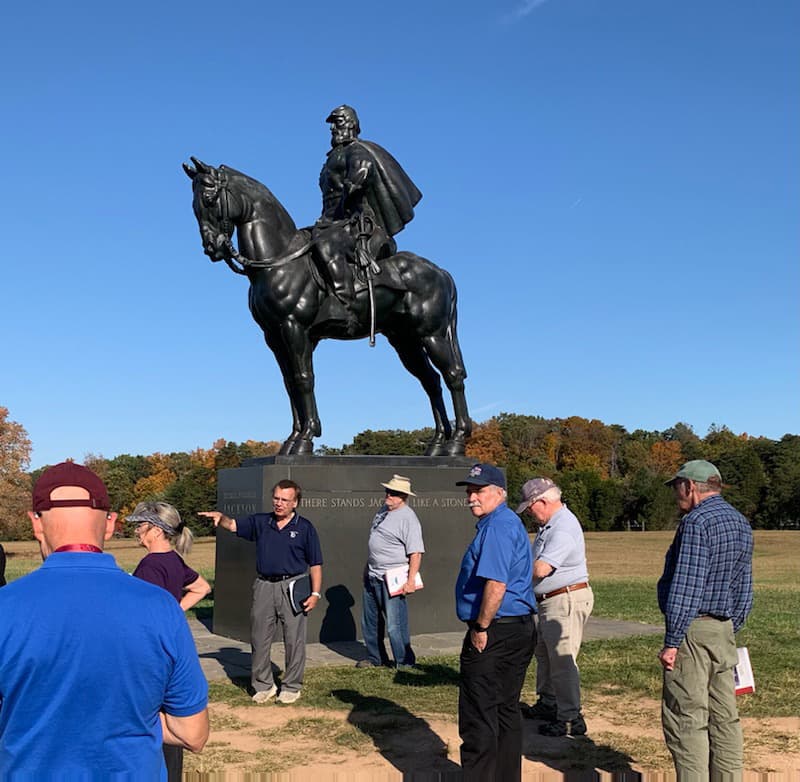
BGES conducts its flagship “Civil War Field University” by design for small groups usually traveling in vans to facilitate maximum access where buses cannot go. By keeping the groups small—usually between 8 and 20 people—BGES provides a stimulating and invigoratingly personal experience available from no other organizations offering Civil War tours.
As a nonprofit, net proceeds underwrite charitable and educational activities of the organization. The reputation of BGES has caused it to be sought nationally and internationally for educational and leadership training, attracting some of the nation’s most respected historians and scholars both as members and teachers.
Inclusions
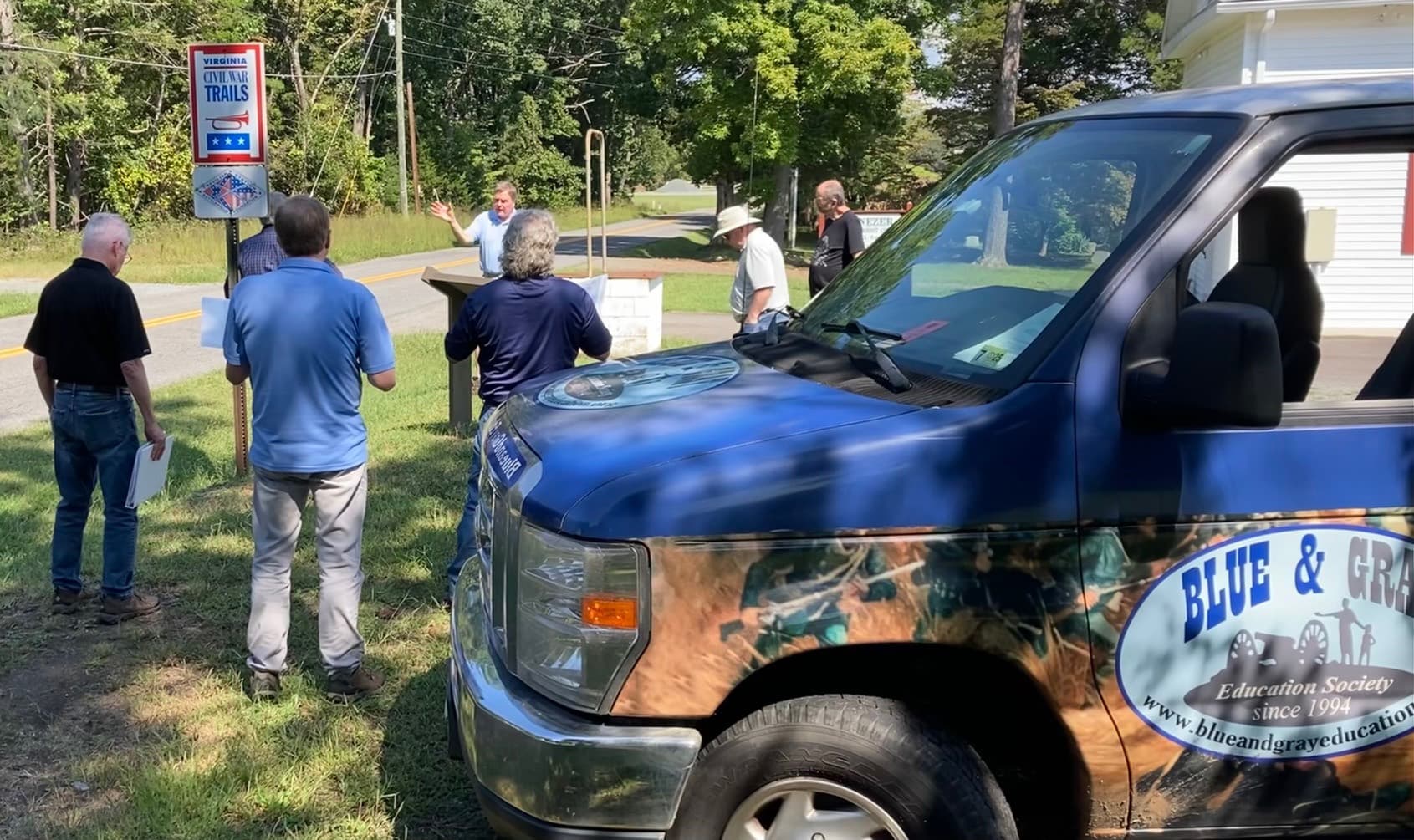
BGES trips offer a range of amenities that vary by the type of tour and the accessibility of resources. Field maps are often designed and used, reading books are usually featured, and suggested reading lists help interested persons prepare for the study to follow. Included meals are listed for each program. Lodging is usually not included unless the tour includes overnight stays away from the headquarters hotel.
Browse our list of upcoming tours on this page. Follow the links for detailed descriptions, itineraries, and registration information.
BGES’S 2025 FIELD UNIVERSITY PROGRAM
Dunmore’s War: The Last Conflict of America’s Colonial Era, 1774, with Dr. Glenn F. Williams, from Mineral Wells, WV | June 25-29, 2025
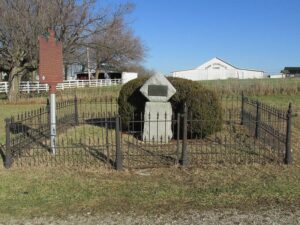 Dunmore’s War, a largely overlooked yet pivotal conflict of 1774, unfolded in the rugged Ohio Valley, primarily in what is now West Virginia, marking the final major clash between American colonists and Native American forces before the Revolutionary War. We are pleased to offer an exclusive tour that explores this fascinating chapter of history, led by historian Glenn F. Williams Ph.D., author of the definitive book on the subject, Dunmore’s War: The Last Conflict of America’s Colonial Era (Wetholme Publishing, 2017).
Dunmore’s War, a largely overlooked yet pivotal conflict of 1774, unfolded in the rugged Ohio Valley, primarily in what is now West Virginia, marking the final major clash between American colonists and Native American forces before the Revolutionary War. We are pleased to offer an exclusive tour that explores this fascinating chapter of history, led by historian Glenn F. Williams Ph.D., author of the definitive book on the subject, Dunmore’s War: The Last Conflict of America’s Colonial Era (Wetholme Publishing, 2017).
Tour Details and Registration Information.
The Stones River Campaign, with Dan Masters, from Smyrna, TN | July 10-13, 2025
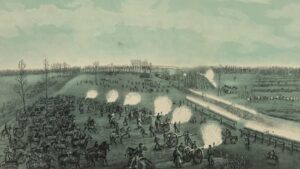 In the busy month of December 1862, as the Union suffered resounding defeats at Fredericksburg, Virginia, and along the steep banks of Vicksburg, Mississippi—including the failed Chickasaw Bayou expedition—newspapers in both the North and South carried headlines that alternately sank and lifted morale. Yet amid these high-profile battles, a less-publicized but arguably more significant campaign was unfolding in the heart of the conflict: middle Tennessee.
In the busy month of December 1862, as the Union suffered resounding defeats at Fredericksburg, Virginia, and along the steep banks of Vicksburg, Mississippi—including the failed Chickasaw Bayou expedition—newspapers in both the North and South carried headlines that alternately sank and lifted morale. Yet amid these high-profile battles, a less-publicized but arguably more significant campaign was unfolding in the heart of the conflict: middle Tennessee.
Tour Details and Registration Information.
The 1777 Philadelphia Campaign: Bloody Battles and Momentous Maneuvers of September, with Gary Ecelbarger and Mike Harris, from Exton, PA | July 23-27, 2025
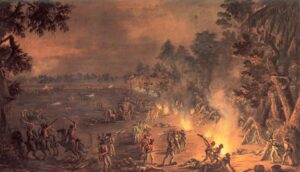 This program, led by Gary Ecelbarger and Michael C. Harris, focuses on the first month of the Philadelphia Campaign. Not only have these scholars reshaped the “whats, whens, wheres, hows, and whys” of this critical campaign of The Cause, but their extensive experience leading battlefield tours—incorporating newly accessible lands and structures—ensures a special experience for both novices and seasoned enthusiasts of the American Revolution.
This program, led by Gary Ecelbarger and Michael C. Harris, focuses on the first month of the Philadelphia Campaign. Not only have these scholars reshaped the “whats, whens, wheres, hows, and whys” of this critical campaign of The Cause, but their extensive experience leading battlefield tours—incorporating newly accessible lands and structures—ensures a special experience for both novices and seasoned enthusiasts of the American Revolution.
Tour Details and Registration Information.
Hood’s Fall 1864 Tennessee Campaign, with Hal Litchford and Jamie Gillum, from Franklin, TN | August 6-10, 2025
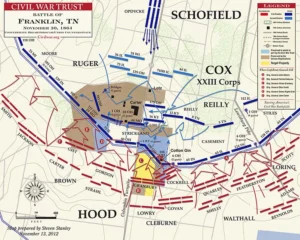
After the Battle of Decatur, Lt. Gen. John Bell Hood continued moving the Army of Tennessee west in search of a place to cross the Tennessee River and to launch his invasion of Tennessee. By October 30, the Army’s vanguard reached Tuscumbia, opposite Florence, Alabama, on the river’s north bank. Hood established Tuscumbia as his base of operations and shifted his supply depot there. However, the supply line remained long and tortuous.
Tour Details and Registration Information.
Battling From Bull Run to Ball’s Bluff and Beyond: The 1861 War in Northern Virginia, with Gary Ecelbarger and Scott Patchan, from Manassas, VA | August 14-17, 2025
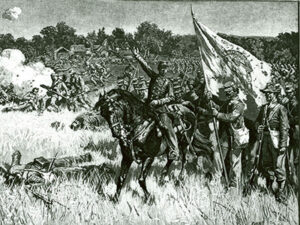 Undoubtedly, the second, third, and fourth years of the Civil War are the most studied and toured period of the great American conflict. This has opened the latter half of 1861 as a prime area for fresh focus––six months of campaigns that set the stage for a ramped-up war that followed. Northern Virginia hosted the largest battle fought on American soil during the first twelve months of the war, a monstrous affair along the banks of Bull Run.
Undoubtedly, the second, third, and fourth years of the Civil War are the most studied and toured period of the great American conflict. This has opened the latter half of 1861 as a prime area for fresh focus––six months of campaigns that set the stage for a ramped-up war that followed. Northern Virginia hosted the largest battle fought on American soil during the first twelve months of the war, a monstrous affair along the banks of Bull Run.
Tour Details and Registration Information.
On Sacred Grounds: The Indian Wars on the Northern Plains, with Neil Mangum, from Billings, MT | September 9-14, 2025
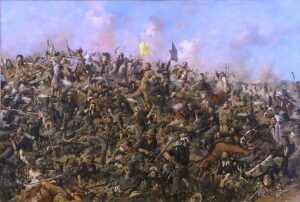 The ideology of Manifest Destiny empowered the unrestricted movement of white settlers across America, encouraging them to exploit and benefit from the vast resources of the wild western territories. These lands for generations had formed the spiritual and cultural heart of Native American life. As settlers pushed westward along key migration routes, the U.S. government responded with increasingly harsh and repressive policies toward Native peoples.
The ideology of Manifest Destiny empowered the unrestricted movement of white settlers across America, encouraging them to exploit and benefit from the vast resources of the wild western territories. These lands for generations had formed the spiritual and cultural heart of Native American life. As settlers pushed westward along key migration routes, the U.S. government responded with increasingly harsh and repressive policies toward Native peoples.
Tour Details and Registration Information.
Cradle of the Revolution: Boston to Lexington and Concord, with Rob Orrison and Mark Maloy, from Boston, MA | September 24-28, 2025
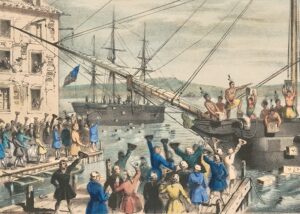 Long considered the “Cradle of the Revolution,” Boston, Massachusetts, was home to many of the era’s leading figures—Dr. Joseph Warren, Samuel Adams, Paul Revere, John Adams, and many more. Its streets and wharves fostered the revolutionary spirit that would ignite a continent. In December 1773, tensions escalated dramatically when dozens of Bostonians and others boarded three ships at Griffin’s Wharf and dumped East India Company tea into the harbor in defiance of the Tea Act. Parliament soon responded with the punitive “Intolerable Acts,” placing Massachusetts under military control.
Long considered the “Cradle of the Revolution,” Boston, Massachusetts, was home to many of the era’s leading figures—Dr. Joseph Warren, Samuel Adams, Paul Revere, John Adams, and many more. Its streets and wharves fostered the revolutionary spirit that would ignite a continent. In December 1773, tensions escalated dramatically when dozens of Bostonians and others boarded three ships at Griffin’s Wharf and dumped East India Company tea into the harbor in defiance of the Tea Act. Parliament soon responded with the punitive “Intolerable Acts,” placing Massachusetts under military control.
Tour Details and Registration Information.
The Fight for Kentucky: Part 1 From Camp Wildcat to Mill Springs and the Cumberland Gap, the Winter 1861-62 Kentucky Campaign, with Lee White, from Richmond, KY | October 2-5, 2025
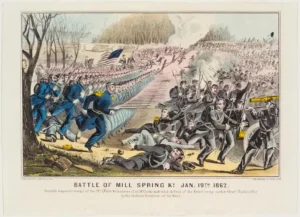 After the Confederate firing upon and capture of Fort Sumter on April 15, 1861, President Abraham Lincoln called on the remaining Union states to provide volunteers to suppress the insurrection in the seven seceded states. Join historian Lee White as he leads you across the key sites in this pivotal early campaign in the Bluegrass State. With fresh analysis and in-depth narrative, Lee brings new perspective to Kentucky’s contested winter of 1861–82.
After the Confederate firing upon and capture of Fort Sumter on April 15, 1861, President Abraham Lincoln called on the remaining Union states to provide volunteers to suppress the insurrection in the seven seceded states. Join historian Lee White as he leads you across the key sites in this pivotal early campaign in the Bluegrass State. With fresh analysis and in-depth narrative, Lee brings new perspective to Kentucky’s contested winter of 1861–82.
Tour Details and Registration Information.
The World Turned Upside Down: The Yorktown Campaign, with Dr. John R. Maass, from Williamsburg, VA | October 23-26, 2025
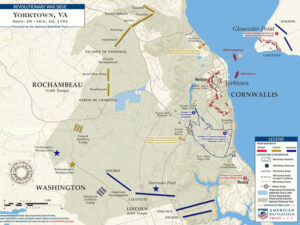 The decisive importance of the Yorktown campaign has been recognized for the past 244 years by historians, public figures, and soldiers, ever since British forces surrendered to the combined Continental and French forces led by George Washington in the small Virginia port town of Yorktown on October 19, 1781. Reflecting on this historic event during its bicentennial, President Ronald W. Reagan stated, “This [surrender] field, this ceremony, and this day hold a special meaning for people the world over,” and he called it “an extraordinary moment in history.” Likewise, just days after the victory, Continental Congressman Elias Boudinot proclaimed it “a day which here ever after [will] be famous in the annals of American history.”
The decisive importance of the Yorktown campaign has been recognized for the past 244 years by historians, public figures, and soldiers, ever since British forces surrendered to the combined Continental and French forces led by George Washington in the small Virginia port town of Yorktown on October 19, 1781. Reflecting on this historic event during its bicentennial, President Ronald W. Reagan stated, “This [surrender] field, this ceremony, and this day hold a special meaning for people the world over,” and he called it “an extraordinary moment in history.” Likewise, just days after the victory, Continental Congressman Elias Boudinot proclaimed it “a day which here ever after [will] be famous in the annals of American history.”
Tour Details and Registration Information.
Longstreet’s East Tennessee Campaign: Knoxville, with Colonel Ed Lowe, from Knoxville-Farragut, TN | November 7-9, 2025
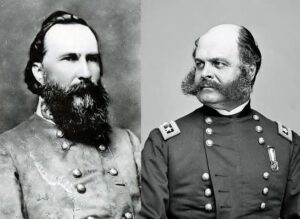 Following the rousing victory at Chickamauga, Georgia, in September 1863, which forced the defeated Federal Army of the Cumberland to fall back into Chattanooga and led to the dismissal of Maj. Gen. William S. Rosecrans, Gen. Braxton Bragg and his Southern troops formed a ring along the high ground surrounding the “Scenic City,” as Chattanooga has been called. From the Tennessee River east of the city, along Missionary Ridge, and up to the towering heights of Lookout Mountain, Bragg’s men effectively bottled up the beleaguered blue-clad soldiers who were now under the direction of Maj. Gen. George H. Thomas.
Following the rousing victory at Chickamauga, Georgia, in September 1863, which forced the defeated Federal Army of the Cumberland to fall back into Chattanooga and led to the dismissal of Maj. Gen. William S. Rosecrans, Gen. Braxton Bragg and his Southern troops formed a ring along the high ground surrounding the “Scenic City,” as Chattanooga has been called. From the Tennessee River east of the city, along Missionary Ridge, and up to the towering heights of Lookout Mountain, Bragg’s men effectively bottled up the beleaguered blue-clad soldiers who were now under the direction of Maj. Gen. George H. Thomas.
Tour Details and Registration Information.
THE REST OF OUR SCHEDULE
We will be posting details on the website soon. Be sure to check back!
*Revolutionary War tours are highlight in red.
October 29-November 2: The Chancellorsville Campaign, with Greg Mertz
November12-15: Shiloh and Corinth with Tim Smith
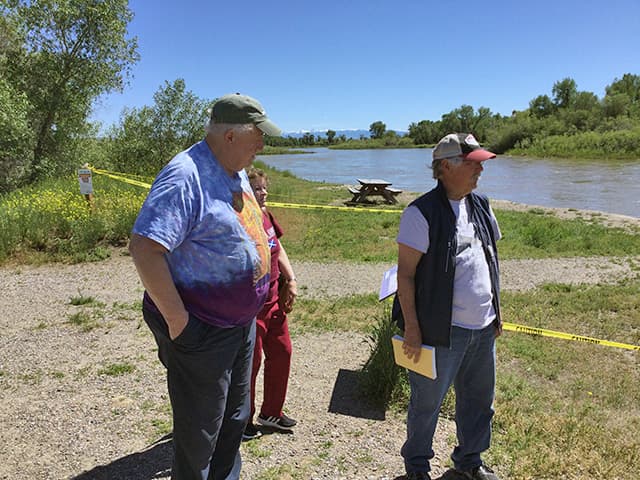
Refund and Cancellations
BGES is an educational organization. All registrations are open-ended and may be refunded if circumstances require the client to cancel. The general policy is a 100% refund for cancellations made before the event. Penalties are not usually assessed unless non-refundable vendor costs are incurred. All refunds are determined and approved by the Executive Director of the BGES.
You must be logged in to post a comment.